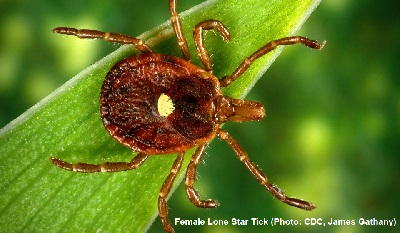Guide to Shipping Ticks for Identification and Testing

Thank you for your interest in submitting a tick to our Kentucky Tick Surveillance Project. The results from the testing done here will be of service to Kentuckians concerned with tickborne illness and the specimens will help to further public health research at the state level. To be clear, this is not a medical diagnostic service. This is a monitoring and surveillance project to better understand what our tickborne issues are in Kentucky.
This service is only offered to residents of the Commonwealth of Kentucky, we will not process your sample if you do not live in the state.
These instructions below should ensure the tick is preserved for testing, safe from shipping, and in compliance with postal regulations.
For safety and successful testing DO NOT:
- Mail in live ticks
- Send ticks in paper envelopes alone
- Ship samples with alcohol in them
- Squish ticks between pieces of tape
TICK SUBMISION FORM
Before preparing the sample, you must fill out the submission form. Samples received without this form will not be processed.
https://experience.arcgis.com/experience/1815230bab084b91a71125eead0005cf/
Next, you can prepare the specimen for shipment.
You will need the following supplies:
- 91% isopropyl alcohol (can be found at nearly any pharmacy)
- One hard plastic container, for example pill bottles with identifying info removed, small plastic travel jars, etc.
- Tweezers
- One plain cotton ball
- Two Ziploc bags
- A padded envelope
Step 1
Take your hard plastic container and pour alcohol into the container. You only need to pour in enough liquid to submerge the tick into.
Step 2
Use the tweezers to pick the tick up and submerge in the alcohol inside of the container. Leave the tick submerged in alcohol for 24 hours.
Step 3
After 24 hours, pour the excess alcohol out of the container into a waste receptacle. There should be no liquid alcohol left. Next, take a cotton ball, or a cut off section of cotton ball, and stuff it into the container.
Step 4
Seal the tick and cotton ball into by closing the container lid. Take the closed container and insert it into a sealable Ziploc bag. Then, seal the Ziploc shut.
Step 5
The Ziploc bag that has the container with the tick and cotton ball in it will then itself be inserted into a second sealable Ziploc bag which is also sealed shut. This double bagging helps preserve the sample. The sample is now ready for shipping.
Insert the double bagged sample into a padded envelope. Ship the padded envelope and contents to this address:
Tick Surveillance Program
C/O Subba Palli
Department of Entomology
S-225 Ag Science Center N
Lexington, KY, 40546-0091
